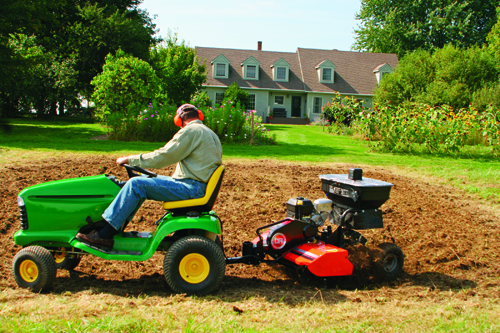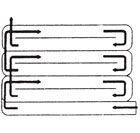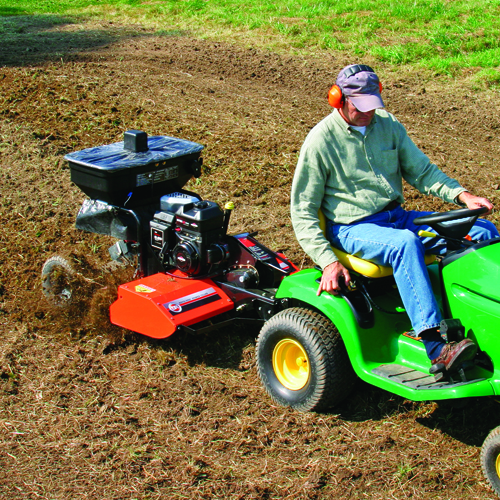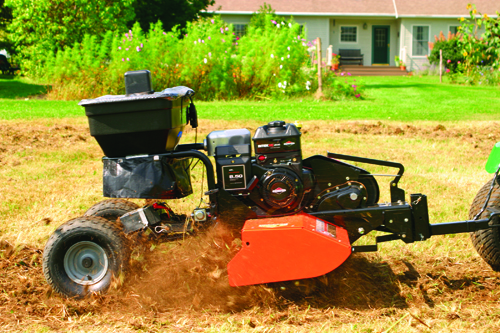
1. Check the ground moisture.
If you can make a ball of soil in your hand, it’s too wet to till. The soil will cake onto your machine, the tines won’t turn properly, and the end result will be less than you expected. Wait a while for it to dry out before tilling.
2. Don’t go too deep too fast.
Soil conditions will determine how deeply you’ll be able to till on the first pass. If the soil is particularly hard-packed or if you’re tilling unbroken sod, just scratch the surface on the first pass. Then, go back over the area again a bit more deeply. Eventually you’ll be able to get to the full depth that your tiller allows for (7-1/2″ for the DR Roto-Hog). If the soil is softer and more malleable, you may be able to till to the full depth on the first pass. The Pro model DR Roto-Hog is unique in that it allows you to adjust the tilling depth right from your towing vehicle, which is a big time- and energy-saver.
3. This isn’t the place for speed demons.
You will get the deepest, most even till if you operate your towing vehicle at full throttle at its slowest speed. Yes, this will take slightly longer to complete the whole garden, but you will be much happier with the result.
4. Till in this pattern.

- Till your first row, then skip a row the width of your machine.
- Circle around and till the skipped row in the opposite direction.
- Skip the next tilled row as well as another row the width of the machine.
- Circle again and till the skipped row.
5. Listen to the tiller.
If you notice that the RPMs on your machine decrease significantly or stall completely, it probably means that the engine is overloaded, and you should try tilling more shallowly (see #2 above). If the RPMs seem to be very high, as if the tines are spinning too fast, try lowering them and tilling more deeply. If you listen closely to your engine, you’ll be able to tell when it’s struggling.

